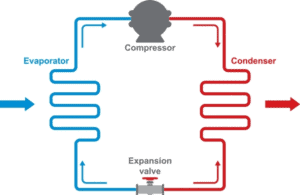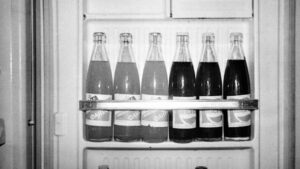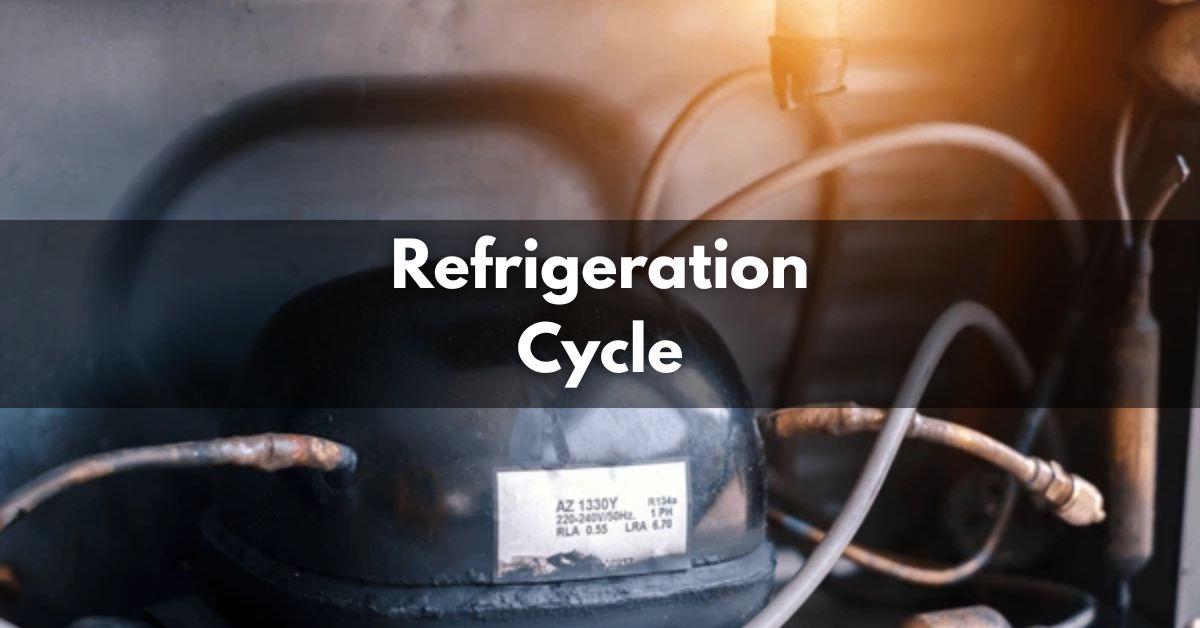Have you ever wondered how your refrigerator keeps your food fresh or how an air conditioner cools you when it’s hot? This is because of something called a refrigeration cycle. It’s a bit like a magic trick that relocates heat from one place to another, making us feel comfortable and keeping things cold. In this post, we will examine the steps involved in the refrigeration cycle in simple terms so that you can understand how this ordinary technology works for our convenience.
The Four Key Components of the Refrigeration Cycle
In simple terms, the refrigeration cycle works by absorbing and rejecting heat. You can’t create cold, you can only remove heat. The refrigeration cycle, also known as a heat pump cycle, moves heat away from the area you want to cool. It does this by changing the pressure of the refrigerant (like air, water, or synthetic fluids) through a cycle of compression and expansion.
This is just a basic overview, but let’s look at the equipment that makes this process work. While there are other components in most systems, the four main parts of a basic refrigeration cycle are:

1. The Compressor
Compression is the first step in the refrigeration cycle. A compressor boosts the pressure of the working gas. Refrigerant comes into the compressor as a low-pressure, low-temperature gas and exits as a high-pressure, high-temperature gas.
Compression happens through various mechanical processes, leading to different compressor designs used in HVAC and refrigeration. Here are some popular types:
- Reciprocating compressors
- Scroll compressors
- Rotary compressors
2. The Condenser
The condenser, also known as the condenser coil, is one of the two main heat exchangers in a basic refrigeration system. It gets high-temperature, high-pressure refrigerant vapor from the compressor. The condenser cools down this hot vapor until it turns into a liquid, a process called condensation. After condensation, the refrigerant becomes a high-pressure, low-temperature liquid. Then, it flows to the system’s expansion device.
3. The Expansion Device
Expansion devices come in a few different designs. Common types include fixed orifices, thermostatic expansion valves (TXVs), and electronic expansion valves (EEVs). No matter the design, the expansion device’s job is the same: it lowers the pressure after the refrigerant leaves the condenser. This drop in pressure makes some of the refrigerant quickly turn into gas, creating a mixture of liquid and gas. This process, known as flashing, prepares the refrigerant for the next part of the system, the evaporator, to work properly.
4. The Evaporator
The evaporator is the second heat exchanger in a typical refrigeration system. It’s named for its main job: absorbing heat. It’s where the real work happens in cooling, as it takes in heat just like we expect from an air conditioner.
Here’s how it works: Refrigerant enters the evaporator as a cold liquid under low pressure. A fan blows air over the evaporator’s fins, which cools the air by transferring the heat into the refrigerant.
Once the heat is absorbed, the refrigerant goes back to the compressor, and the cycle starts over again. That’s the basic idea of how a refrigeration loop works. If you have questions about this process or its parts, feel free to call us. We’ve been helping customers with HVAC and refrigeration systems for almost 100 years.
History of Refrigeration
Before diving into the refrigeration cycle, let’s first look at the history of refrigeration. It goes back to ancient times when people used ice and snow to keep food and drinks cool. However, mechanical refrigeration didn’t come about until the 19th century.

In 1834, Jacob Perkins invented the first vapor-compression refrigeration system. This system worked by using a compressor to compress a refrigerant gas, turning it into a liquid. The liquid refrigerant then moved through a coil, where it boiled and absorbed heat from the air, cooling it down and creating ice.
In 1851, John Gorrie invented the first refrigerator using compressed air. This system cooled the surrounding air by expanding compressed air.
In 1876, Carl von Linde improved on Perkins’ design by creating a more efficient and reliable vapor-compression refrigeration system.
In 1913, Fred W. Wolf invented the first refrigerator for home use. This refrigerator was small enough to fit in a house and ran on electricity.
By the early 20th century, refrigerators became more common and affordable, thanks to the development of new refrigerants like Freon, which were more efficient and less toxic than earlier ones.
Methods of Refrigeration
There are two methods of refrigeration: cyclic and non-cyclic. Here’s how each works:
Cyclic Process
In the cyclic process, heat is taken from a cold area and moved to a warmer area. Normally, heat flows from hot to cold, but in this process, we reverse that flow. To do this, we need to do some external work on the system. This process is also called the Reverse Carnot Cycle because it works opposite to the Carnot cycle, where heat naturally moves from hot to cold.
Non-Cyclic Process
In non-cyclic refrigeration, cooling happens by melting ice or subliming dry ice (turning it directly from solid to gas). These methods are often used for small-scale cooling, like in laboratories, workshops, or portable coolers. Ice is effective because it melts at a constant temperature of 0°C, which helps keep food fresh for longer. Dry ice, which is solid carbon dioxide, turns into gas at -78.5°C, making it good for keeping things very cold. In non-cyclic refrigeration, the cooling agent evaporates and is released into the air.
Uses of Refrigeration
Here are the main uses of refrigeration:
- The chemical industry uses refrigeration to separate and liquefy gases and vapors.
- Refrigeration is great for making ice.
- The main use of refrigeration is to store perishable foods in cold storage.
- It can also cool water when needed.
- In steel manufacturing and heat treatment, refrigeration helps control air humidity.
- Oil refineries use refrigeration to chill oil and remove wax.
- In the pharmaceutical industry, refrigeration preserves capsules and medications.
- It is also used in medical fields to preserve blood, tissues, and other materials.
Common Issues Affecting the Refrigeration Cycle
Here are some common issues with the refrigeration cycle in your HVAC system that can make your air conditioner or heat pump work poorly or fail to cool your home:
- Low refrigerant
- Refrigerant leak
- AC blowing warm air
- Dirty coils
- Frozen evaporator coil
- Short cycling
- High energy use
- And more
Regular maintenance can help prevent some of these problems. If your central air conditioning or heat pump isn’t cooling properly, reach out to a trusted HVAC company for help. You can also check our AC troubleshooting guide for more tips.
Conclusion
In conclusion, understanding the refrigeration cycle explains why our domestic appliances are convenient and save food. To cool air in such a system, heat must be transferred from the air to the refrigerant liquid that is circulated within it. No matter how big or small it may be, every part of a refrigerator is crucial for its smooth operation. This knowledge will help you resolve simple operational problems and maintain your system efficiently. For more information or suggestions on what to do in order to keep your home environment comfortable contact an HVAC expert today.
FAQs
What is the refrigeration cycle?
The refrigeration cycle is a process that cools down a space, substance, or system.
What are the 4 stages of the refrigeration cycle?
All air conditioners follow the same four stages: compression, condensation, expansion, and evaporation. The refrigerant moves heat from one area to cool it and then releases that heat elsewhere.
How does refrigeration work?
Refrigerators make the refrigerant inside them change from a liquid to a gas. This process, called evaporation, cools the area around it. You can see this effect by putting a few drops of alcohol on your skin.
What is refrigeration?
Refrigeration is the process of removing heat from a cool area and transferring it to a warmer area.
What does HVAC stand for?
HVAC stands for Heating, Ventilation, and Air Conditioning.
Read More – Explained Quick Guide to Variable Air Volume – VAV Systems in 2024











